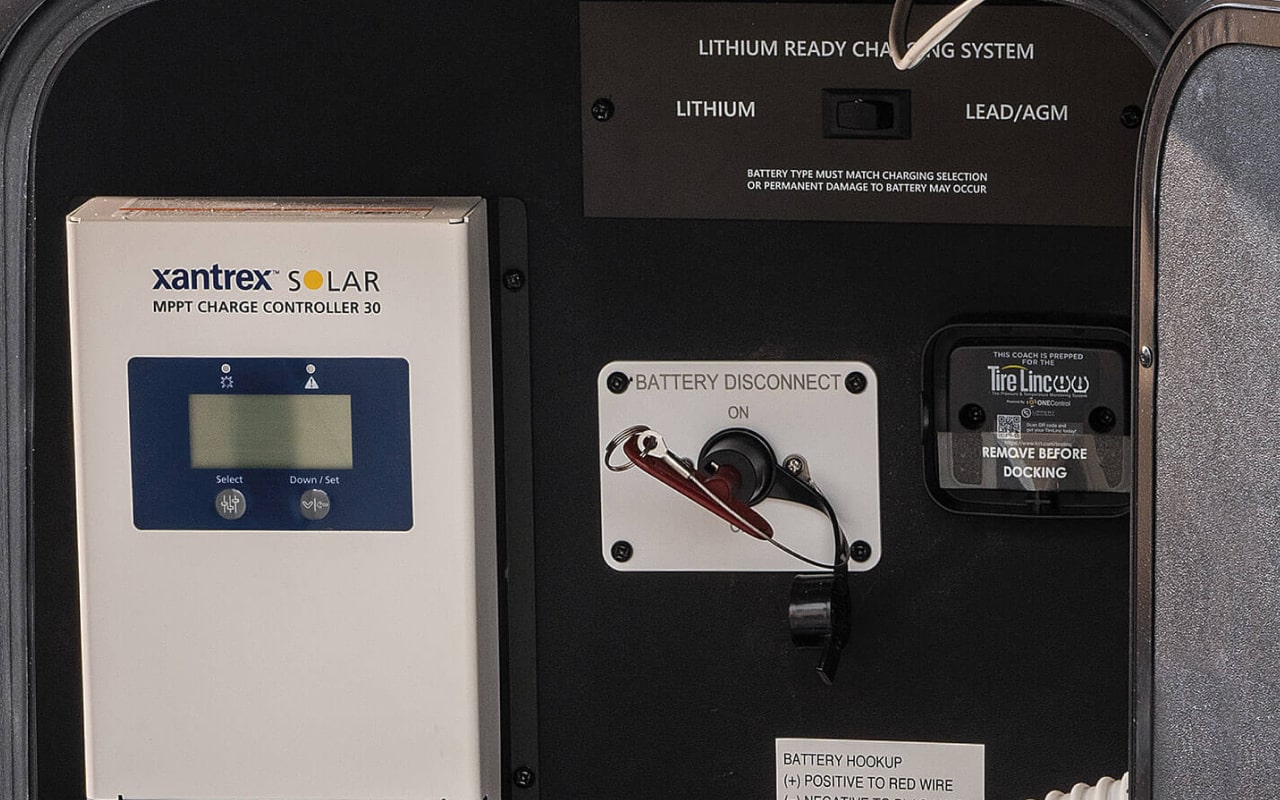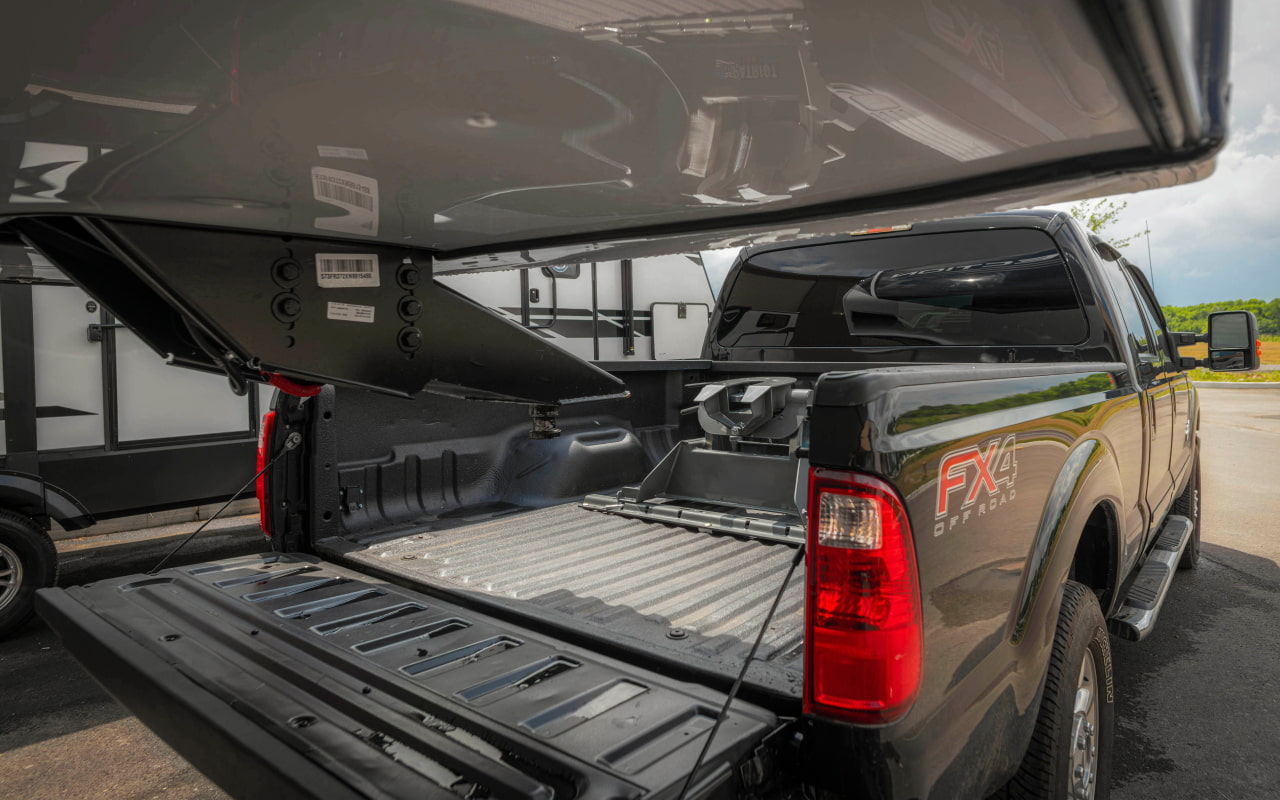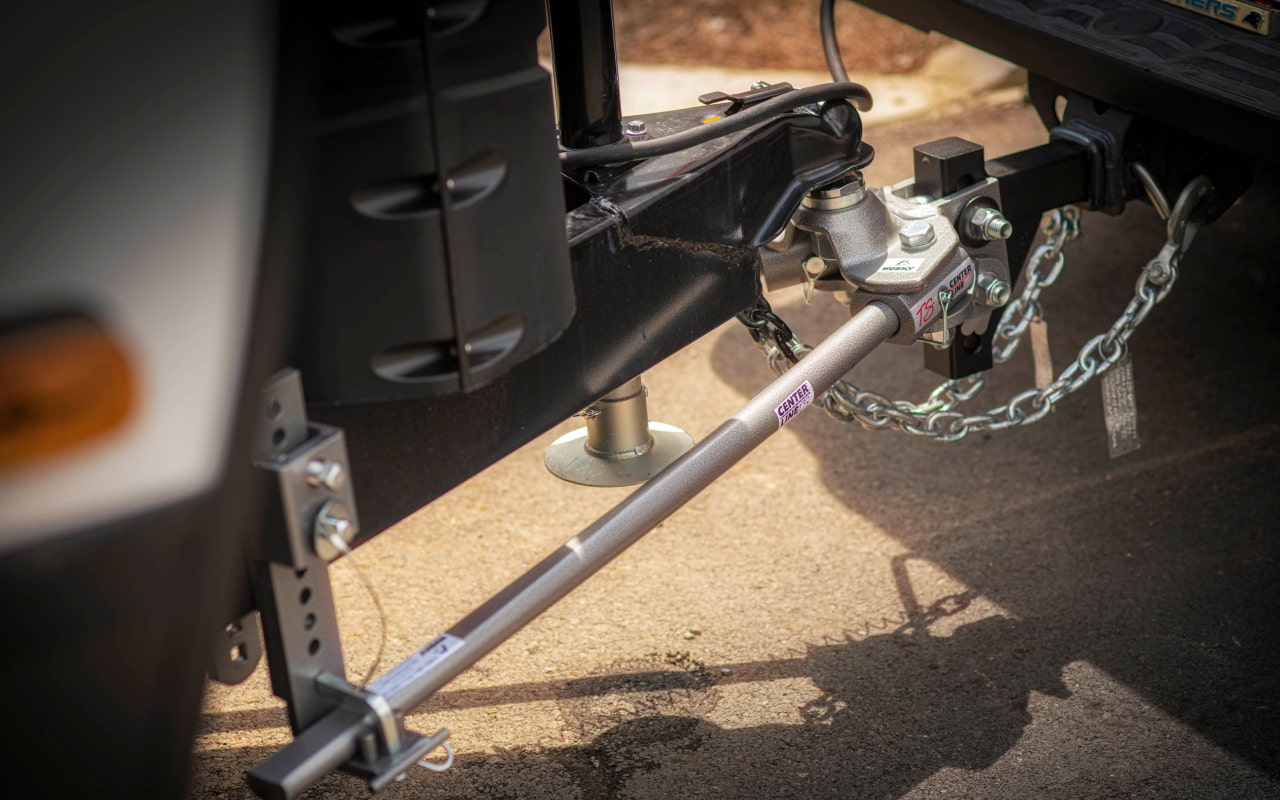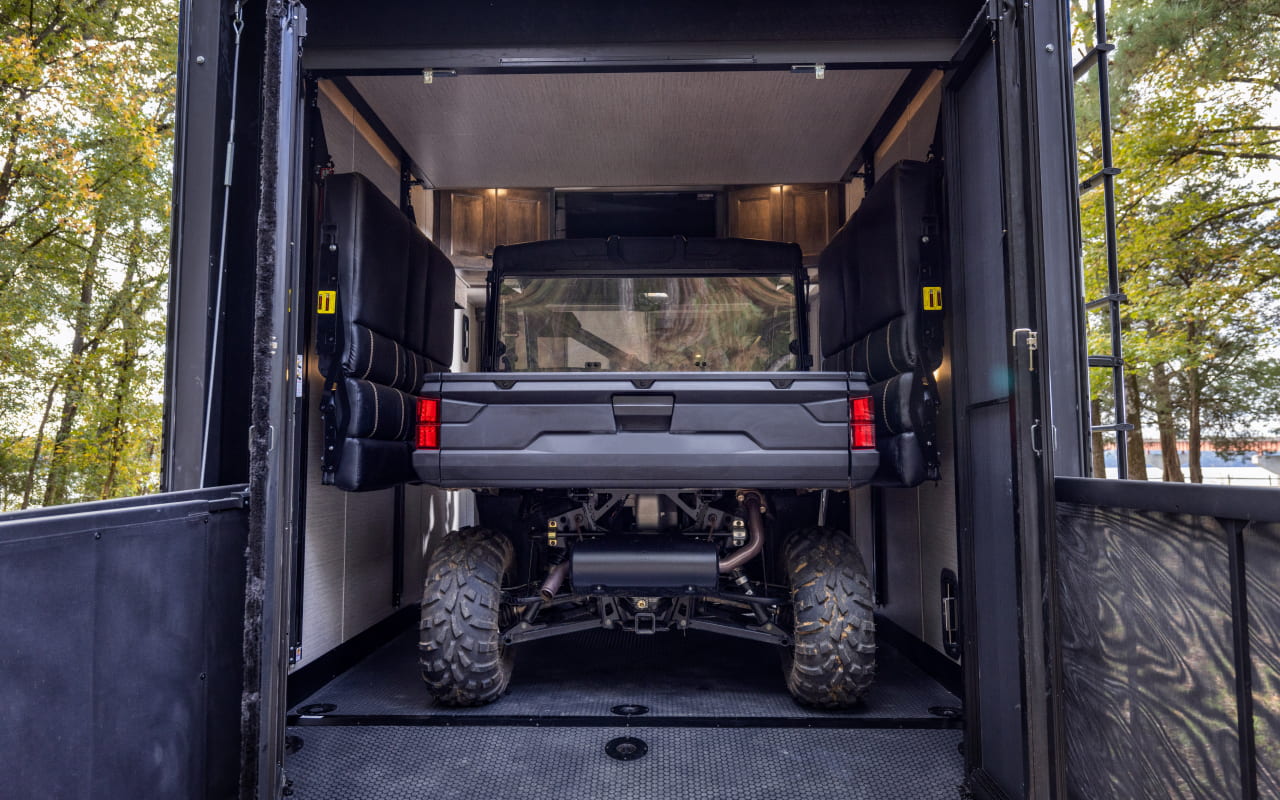
Many towable and motorized RVs come with batteries that make it easy to enjoy the comforts of home wherever your travels take you. Charge up your knowledge of RV batteries with our guide!
How RV Batteries Work
Like the battery in your cell phone, your RV’s batteries work by holding electricity from an outside source to be used independently of that source. Your batteries don’t generate electricity, but instead, they store it and safely discharge the electricity to your appliances, entertainment system, lights, or other desired components. In RVs, the batteries usually receive electricity from shore power, an alternator in the chassis, solar panels, or from an RV generator.
Your RV batteries work by receiving and storing electricity from your chosen power source. They hold this power until you discharge the battery by utilizing the electrical equipment plugged into the battery. Batteries are the key to making sure you have the comforts of home wherever your RVing travels take you.
Most Common Types of RV Batteries
Motorhomes typically contain two types of batteries: starting and deep cycle batteries. Your RV’s starting battery is like the battery in your car, it’s used to provide a burst of power to get your engine running. The deep cycle battery is more RV-specific and it may be found in both towable and motorized units.
Deep cycle batteries, also known as RV house batteries, are the most common ones you’ll find in today’s RVs. Their construction is different from other battery types, this battery uses thick internal plates which help provide continuous, steady electricity over a long period of time. Best yet, deep cycle batteries are designed to be fully charged and discharged without losing storage or functionality. Your RV’s deep cycle batteries are designed to continue providing reliable power to your RV for many adventures to come.
Types of Deep Cycle RV Batteries
As the most popular battery type for powering RVs, deep cycle batteries have gotten many updates in recent years. Today, there are multiple deep cycle battery types available in a variety of sizes. The most common types of RV house batteries are:
- Flooded lead-acid (aka wet cell) batteries
- Gel batteries
- AGM (absorbed gas mat) batteries
- Lithium-ion batteries
Each deep cycle RV battery type offers its own features and benefits. Flood lead-acid batteries are the oldest type of battery in RVs and can provide reliable power, but they may require more maintenance than other RV battery types. Gel batteries require less maintenance, but they may be slower to charge. AGM batteries also bring less maintenance, but they may have a shorter life expectancy than other batteries.
Lithium-ion batteries are the newcomer to the RV battery market. They’re efficient, offer a long lifespan, and can even perform better than other RV battery types. Best yet, they’re more lightweight than other batteries on the market, making them a popular choice in today’s RVs. But, lithium-ion RV batteries may be more expensive than others.
RV House Battery Sizes
Deep cycle RV house batteries are available in a variety of sizes and capacities. These batteries most often come in 6 or 12 volts. Your RV will likely already include batteries for utilization, and many RVers choose to stick with those. But some also consult our RV experts for a new battery setup that best matches their RVing needs.
Once you’ve chosen your desired battery type and size, our RV service experts can help ensure your battery systems are properly installed. This also includes the inverter, which can help make your RVing that much more comfortable.
How Does My RV Inverter Work?
With many of today’s RVs for sale featuring residential-style designs and appliances, it’s important to make sure you’re properly powering these features. Many of the items requiring power aboard your RV, such as the refrigerator, TVs, and even your cell phone charger function on AC (Alternating Current) power. But, most batteries used in recreational vehicles offer their power in a DC (Direct Current) output of a different voltage. Your RV’s inverter works to transform the DC power to the proper AC voltage to safely power your RV’s electrical features.
How Can I Tell Between 30AMP and 50AMP Batteries?
The easiest way to tell the difference between 30AMP or 50AMP is to look at the plug. The 30AMP plug will have three slanted prongs, while the 50AMP will have five prongs. In the 50AMP, you’ll see three straight lines, a circle in the center, and a curved prong with a flat side as well.
How to Maintain RV Batteries
Many of today’s most popular RV battery types offer impressive lifespans that keep things running for many adventures to come. The key to keeping your RV batteries running smoothly is to properly maintain them. With newer batter types, maintenance generally involves ensuring it’s not overcharged or undercharged. RVers with flooded lead-acid batteries should also periodically check the electrolyte levels in the battery to ensure the lead pates aren’t exposed to air.
When using RV storage, there should be additional care taken to make sure the batteries aren’t damaged while the RV is being stored. Contact our RV service experts to learn more about caring for your RV’s batteries!



